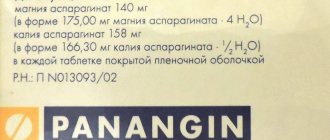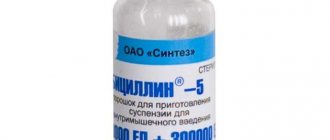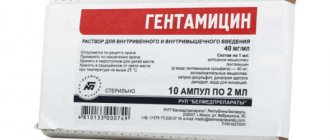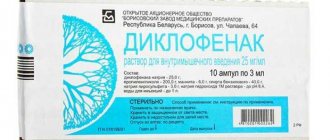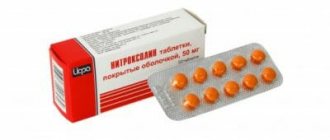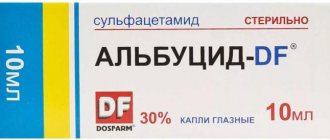Effective analgesics, antipyretics and non-narcotic non-steroidal drugs include the drug Baralgin. It is characterized by antipyretic, analgesic, and mild anti-inflammatory effects. The name of the product in Latin is Baralgin. The drug is available in the form of tablets, a solution for intravenous or intramuscular injection, and suppositories. Baralgin contains pitofenone, metamizole sodium, fenpiverinium bromide.
Indications
According to the instructions for Baralgin, injections are quite widely used in medicine. The drug is intended to eliminate pain of varying strength, which is difficult to eliminate with the help of other medications. Can be used for fevers that are difficult to neutralize for various reasons.
The drug is used for moderate and mild pain, as well as for spasms of smooth muscles.
According to the instructions for use for injections, “Baralgin” is also used in the following situations:
- Biliary dyskinesia, which manifests itself in impaired motility. May be functional or related to organic causes.
- Postcholecystectomy syndrome (a specific symptom complex caused by surgery to remove the gallbladder).
- Chronic colitis (an inflammatory process that affects the mucous and submucous membranes of the intestine).
- Inflammation of the pelvic organs.
- Algodysmenorrhea (pain syndrome that accompanies menstrual rejection of the endometrium).
Pharmacological properties of the drug
Under a trade name that contains the word Baralgin, only one drug is registered in Russia - “Baralgin M”, containing a single active substance. This is metamizole sodium, otherwise analgin, a derivative of 5-pyrazolone. Baralgin M is classified as an NSAID with weak anti-inflammatory activity, non-selectively blocking cyclooxygenase enzymes and inhibiting the synthesis of prostaglandins. Until 2009, there was a medicine called “Baralgin”, the composition of which included 3 active ingredients. In addition to metamizole, these are the myotropic antispasmodic pitofenone and the m-anticholinergic fenpiverinium bromide. Combinations of these active compounds led to a wider range of uses of the drug.
Why was Baralgin prescribed: in addition to the therapeutic effect of metamizole sodium, it could also be used to relax the smooth muscles of internal organs and vascular walls, relieve spastic pain, strengthen spasmodic muscle fibers of blood vessels, improve blood flow, incl. brain, and to lower blood pressure.
At the moment, pharmacy chains do not sell the combination drug.
Baralgin M, made on the basis of metamizole, has the following effect:
- analgesic – weakens or completely relieves pain of low or moderate intensity by inhibiting the conduction of pain impulses, increasing the threshold of excitability and reducing the sensitivity of receptors to the action of various pain stimuli;
- antipyretic – reduces pathologically elevated temperature without affecting the normal value. The effect is achieved by the inhibitory effect of Baralgin, which reduces the flow of impulses from thermal receptors to the nuclei of the hypothalamus, which are responsible for thermoregulation. Due to the suppression of the activity of nerve cells of the posterior hypothalamus, heat generation decreases, peripheral vasoconstriction is eliminated, heat transfer increases and, accordingly, body temperature returns to normal;
- antispasmodic - eliminates spasms caused by strong contraction of the muscles of the walls of the internal organ, mainly the ureters, renal pelvis, bladder wall of the urinary cavity and biliary tract;
- anti-inflammatory – reduces the severity of inflammation. The effect is minor.
When else is the drug used?
According to the instructions, Baralgin in ampoules is effective for:
- Myalgia (a disease characterized by muscle pain of various locations and origins).
- Sciatica (pain syndrome resulting from compression or irritation of the sciatic nerve).
- Arthralgia (a pathological condition characterized by the appearance of pronounced pain in one joint or in several at once).
- Neuralgia (pathological condition that progresses due to damage to certain parts of the peripheral nerves).
Use during pregnancy
Use is prohibited during pregnancy, regardless of its duration, since the composition contains substances that can worsen the health of the woman and the unborn child. Also, in no case should you use the product while breastfeeding, since the substance can enter the baby’s body with mother’s milk and cause an acute allergy, including the most severe consequences. If a nursing mother has taken it, it is necessary to refrain from breastfeeding for at least 2 days.
Contraindications
According to the instructions for use, “Baralgin” in ampoules is prohibited for use in the following conditions:
- Bronchial asthma (inflammation of the respiratory system with the participation of various cellular microelements).
- Sensitivity reaction to pyrazolidines.
- Pregnancy.
- Serious allergic manifestations.
- Anaphylactic reactions (clinical manifestation of systemic allergy).
- Edema.
- Rhinitis (inflammatory process in the nasal mucosa).
- Urticaria (skin lesion of allergic origin, which is characterized by the sudden appearance of severely itchy formations).
- Patients are up to three months old and weigh no more than five kilograms.
- Bone marrow dysfunction.
- The development of attacks of porphyrin disease (a group of congenital diseases caused by an increase in the level of porphyrins in the body, as well as the substances that form them).
- Lactation.
- Decreased blood pressure.
- Impaired kidney or liver function.
Side effects
The use of Baralgin is often accompanied by various adverse events. The risk increases if the established dosages and identified contraindications reported in the instructions are not observed.
The manufacturer warns about the possibility of developing the following effects:
- acute coronary allergic syndrome, sudden drop in pressure, cardiac arrhythmia;
- malfunction of the kidneys, acute inflammation of interstitial tissue, red coloration of urine;
- changes in the blood picture, hematological disorders of immune genesis, up to failure of all types of blood cells and death;
- urticaria, bronchospasm, hypersensitivity reaction, anaphylaxis, fixed drug rash or erythema, itching, burning, swelling;
- post-injection infiltrate - painful compaction at the injection site.
The instructions inform you about the numerous drug interactions of Baralgin. To prevent increased toxicity of drugs and increased severity of negative consequences, you must notify your doctor about all cases of simultaneous or sequential use of other medications. Only a specialist will eliminate unacceptable combinations and adjust the dosage of medications.
How to take the drug correctly?
According to the instructions for use for Baralgin injections, for adolescents over 15 years of age and adult patients, a single dose varies from 500 mg to 1 g.
The daily concentration of the drug should not exceed two grams. It must be divided into three injections. The medication can be used intravenously or intramuscularly.
According to the instructions for use of Baralgin, the injection is administered intramuscularly for the treatment of children from three months to one year, weighing from five to nine kilograms.
The recommended dosage ranges from 50 to 100 ml per 10 kg of weight (approximately 0.1–0.2 ml solution). This concentration of the drug can be administered no more than three times during the day.
According to the instructions for use of Baralgin in ampoules, you need to heat the solution to body temperature before using the drug. Intensive administration of the drug can cause shock. For intravenous infusion, the rate should be no more than one milliliter per minute strictly with the patient in a supine position.
In this case, it is necessary to monitor breathing, pulse and blood pressure. Particular care should be taken when administering Baralgin in dosages exceeding 2 milliliters. A significant decrease in blood pressure readings is possible. The duration of treatment is regulated by the doctor on an individual basis.
Release form
Baralgin is produced in the form of tablets and suppositories.
Baralgin is also produced in ampoules. Baralgin contains active components - analgin, an antispasmodic (the effect of which can be compared with the effect of papaverine) and a ganglion blocker in the following ratios:
- Tablets (1 piece) – 0.5 g/0.005 g/0.0001 g;
- Ampoules (5 ml) – 2.5 g/0.01 g/0.0001 g;
- Candles (1 pc.) – 1 g / 0.01 g / 0.0001 g.
https://www.youtube.com/watch?v=https:accounts.google.comServiceLogin
1 ml of solution for injection contains metamizole sodium 500 mg; in ampoules of 5 ml, box of 5 ampoules.
1 tablet - 500 mg; 10 pcs in a blister, 10 blisters in a box.
As stated in the instructions for use, Baralgin contains metamizole sodium, colloquially referred to as analgin, as its main component. A solution for intravenous or intramuscular injection contains 2.5 g of active substance, while analgin tablets contain only 0.5 g. Tablets and ampoules, in addition to this main ingredient, contain the following substances in different proportions:
- Diphenyl 4-piperedyl-acetamide bromomethylate;
- benzophenone hydrochloride (synonymous with papaverine).
Baralgin is used in two forms - tablets or injection solutions. In order not to harm the body, you need to carefully study the instructions for use of the tablet form of the drug. Baralgin injections should be prescribed as prescribed by a doctor and done by qualified nurses.
The drug should be administered slowly, since the rapid release of metamizole sodium into the bloodstream can cause cardiac muscle arrest in patients suffering from acute heart failure. The duration of administration of one ampoule of Baralgin, as described in the instructions for use, should be at least five to eight minutes to eliminate the likelihood of side effects.
The use of Baralgin tablets is convenient because it can be easily done even at home. The main thing is to use the doses of the drug prescribed by the doctor.
Very often, this drug in tablet dosage form is prescribed to maintain pain relief after injections. To do this, the specialist calculates the dosage of the medicine based on the patient’s condition and weight. No less important is the presence of concomitant diseases in the patient. As a rule, their presence requires the use of minimally effective doses of the drug.
Metamizole, available in tablets, is important to have in your home medicine cabinet for every person who has no contraindications to its use. Baralgin will quickly help with migraines, menstrual pain or toothache.
"Painkiller", produced in tablet form, contains the same active substances - analgin (500 mg), pythophenone hydrochloride (5 mg) and fenpiverinium bromide (0.1 mg). It is these components of the drug that contribute to the rapid and long-lasting analgesic effect.
Before using Baralgin, you need to find out what contraindications it has (pregnancy, lactation, asthma, tendency to anaphylactoid reactions, liver or kidney problems, children under 3 months of age, etc.). Otherwise, the patient may suffer serious consequences.
Adverse reactions
The following negative manifestations during therapy were recorded:
- Phlebitis (acute or chronic inflammation of the venous wall).
- A burning sensation that is accompanied by itching.
- Leukopenia (decreased number of white blood cells in the blood).
- Quincke's edema (a disease characterized by the occurrence of clearly limited swelling of the skin).
- Proteinuria (increased protein content).
- Oliguria (decreased amount of urine excreted compared to normal).
- Interstitial nephritis (acute or chronic non-purulent inflammation of the stroma and tubules of the kidneys, caused by a hyperergic immune reaction).
- Bronchospasm (a pathological condition that occurs when the smooth muscles of the bronchi contract and their lumen decreases).
- Anaphylactoid manifestations (the body's reaction to a specific allergen, accompanied by muscle spasms, swelling, severe pain and suffocation).
- The occurrence of arrhythmia (a pathology that leads to a failure in the frequency, as well as the rhythm and sequence of excitation and contraction of the heart).
- Reduced blood pressure.
- Lyell's syndrome (the most severe manifestation of allergic bullous dermatitis).
- Stevens-Johnson syndrome (an acute toxic-allergic disease, the main characteristic of which is rashes on the skin and mucous membranes).
Side effects
Since the drug acts systemically on the smooth muscles of all internal organs, its use may be accompanied by side effects from a variety of internal organs:
- from the hematopoietic system – agranulocytosis, thrombocytopenia, leukopenia;
- allergic reactions to the main or auxiliary components of the drug - urticaria, itching, irritation, drying of mucous membranes, stomatitis, vaginitis, very rarely - the formation of Quincke's edema or anaphylactic shock;
- Constant use of Baralgin can provoke a feverish state, increased temperature, pain in the throat;
- from the genitourinary system - proteinuria, renal dysfunction, anuria, nephritis, red tinting of urine, increase in prostate size;
- from the cardiovascular system - tachycardia, arrhythmia, decreased blood pressure.
Peculiarities
According to the instructions for use for Baralgin injections, with the parallel use of cytostatic medications, injection treatment is carried out strictly under the supervision of a doctor.
If a longer course of therapy is required, then constant monitoring of the blood condition is considered necessary.
The instructions for use for Baralgin injections indicate that it is necessary to stop using the drug if there is a sharp increase in temperature, which is accompanied by chills, as well as pain in the oral cavity, and the appearance of erosions on the oral mucosa. The occurrence of severe neutropenia also requires discontinuation of the drug.
Recorded situations of anaphylactic shock, as a rule, occurred in people who are prone to allergies and have a history of bronchial asthma.
The risk group includes patients suffering from the following ailments:
- Hives.
- Rhinosinusitis (a disease in which the sinuses and mucous membranes are affected by a bacterial infection or viruses).
- Alcohol intolerance.
Intravenous injections are given slowly to reduce the likelihood of complications. Baralgin is used with extreme caution when there is low blood pressure or high temperature. Particular attention should be paid to those people who suffer from heart failure, as well as glomerulonephritis and other kidney diseases.
It is unacceptable to use the drug if severe pain occurs in the abdominal area without a diagnosis.
Long needles are used to administer the drug intramuscularly. In pediatrics, intravenous injections are contraindicated for use in patients under one year of age.
You can drive a car while on medication, but you still need to be careful.
According to the instructions for use for Baralgin injections, an overdose requires complex therapy. There is no antidote for poisoning with this drug. Hemodialysis and forced diuresis are possible. If a convulsive syndrome occurs, it is necessary to administer Diazepam intravenously.
special instructions
Scientists have proven that people with chronic urticaria, intolerance to alcohol and preservatives are at risk of developing allergies. Baralgin turns urine red. This process has no clinical significance. It ends after the end of therapy.
Long-term treatment requires constant monitoring of blood composition. It is prohibited to use the medicine in any form of release for the purpose of relieving acute abdominal pain until the etiology of the symptom is determined. Baralgin is not prescribed to patients in high dosages if various disorders in the functioning of the kidneys and liver are detected.
The drug is prescribed with extreme caution in the following cases:
- pressure below 100 mm Hg. Art.;
- circulatory problems, including shock, heart attack;
- renal pathologies;
- disturbed composition of peripheral blood, including the condition after taking cytostatics.
Baralgin is prescribed to pregnant women after the 2nd trimester, but only if there are strict indications. The period of taking the antispasmodic varies between 4-6 months of pregnancy. If Baralgin is taken during lactation, feeding is stopped for 2 days.
Can the drug be used during pregnancy?
Baralgin is not used in the last and first trimesters. In other cases, the use of the drug is permitted under the supervision of a doctor and for medical reasons, since there is a possibility of premature closure of the functioning pathological communication between the aorta and the pulmonary circulation vessel in the first hours after birth.
During lactation, after administration of the solution, it is not recommended to breastfeed for two days.
Indications and contraindications
The main indication for using the drug is acute pain . This symptom is characteristic of many diseases. Baralgin is administered:
- for fractures;
- osteochondrosis;
- acute pancreatitis;
- intercostal neuralgia;
- sciatica;
- renal colic.
In the form of injections, the drug can only be used in a hospital setting. In rare cases, the medicine is used to lower a very high fever. Baralgin is not prescribed as the main therapeutic drug.
You should stop using the drug if there are the following contraindications:
- individual intolerance to components;
- problems with bone marrow functioning;
- bronchial asthma;
- acute renal porphyria;
- pregnancy;
- lactation;
- pathologies in the liver and kidneys;
- bleeding disorders;
- age up to 12 months.
Improper use of the drug can lead to serious consequences. Self-administration of medication into a vein or muscle is prohibited. Before prescribing Baralgin, the doctor must make sure there are no contraindications.
Interaction with other drugs
"Baralgin" enhances the sedative effect of alcoholic drinks, and the parallel use of non-narcotic painkillers leads to an increase in toxic symptoms. When used with Cyclosporine, it is necessary to monitor its content in the blood.
Increased toxicity of the drug and changes in metabolism occur during interactions with oral contraceptives, as well as tricyclic antidepressants.
When treating with Baralgin, you cannot simultaneously use radiopaque agents, penicillin drugs and colloidal blood substitutes.
"Baralgin" increases the effect of "Indomethacin", as well as indirect anticoagulants and glucocorticosteroid substances. This drug should not be mixed with other medications in the same syringe.
Mechanism of action
Once inside the gastrointestinal tract, the medication is quickly absorbed by the body. The maximum concentration of the active substance in the blood is achieved after 15-20 minutes. The drug is excreted from the body by the kidneys in about 3 hours. The action of Baralgin is similar to non-steroidal non-narcotic PVA - the drug has an analgesic, antipyretic and slight anti-inflammatory effect due to the suppression of the activity of prostanoic acid derivatives. At the same time, smooth muscles relax, spasms are relieved, and pain subsides.
Analogs
Baralgin has a number of substitute drugs that are available in different dosage forms, for example:
- "Spazgan";
- "Zologan";
- "Spazmalgon";
- "Combispasm";
- "Spakovin";
- "Maxigan";
- "Trigan";
- "Nebalgan";
- "Buskopan";
- "Spazmoverin";
- "Novigan";
- "Papaverine";
- "Optalgin";
- "Spazdolzin";
- "Dexalgin";
- "Rapten";
- "Minaralgin";
- "Platifillin."
Before replacing a medicine with a similar product, you should consult a doctor.
approximate price
| Pharmacy name and address | Cost of packing 20 pcs., 500 mg, rub. |
| ElixirFarm, st. 2nd Baumanskaya, 38 | 232 |
| Pharmacy chain “36.6”, Kutuzovsky pr., 26 | 273 |
| Europharm, st. Butyrskaya, 86b | 240 |
You can find out how much a medicine costs at any pharmacy. On average, the price varies between 450 rubles per package, including 5 ampoules. Prescription drugs are sold only as prescribed by a doctor.
How much does Baralgin cost? The average price in pharmacies is 225 rubles.
The price of Baralgin depends on the number of tablets or ampoules in the package. The cost of the drug may vary slightly in different regions.
- pack of 20 tablets - average price 200 rubles;
- injection solution (5 ampoules) – from 250 rubles.
- pack of 20 tablets – from 210 hryvnia;
Spasmonet; Spasmalgon; Unispaz.
Other drugs should only be taken after studying the relevant information.
Reviews
Patients in their responses to Baralgin report its positive characteristics. For example, the drug has an immediate effect, since it contains an analgesic and an antispasmodic.
The advantages of the medication also include a variety of dosage forms - each person will be able to choose the one they need according to their desire or depending on the situation.
"Baralgin" perfectly helps eliminate muscle and radiculitis pain. Recommended for use for painful periods and neuralgia.
Bottom line
- before using Baralgin, it is recommended to consult a specialist and identify possible contraindications;
- The drug should be taken no longer than five days;
- Baralgin relieves most types of pain syndromes;
- during pregnancy, the drug is contraindicated (even in the second trimester it is better to replace it with more affordable means);
- You should take the medication before meals, 1-2 tablets;
- Baralgin should be combined with other drugs only after studying the relevant information.
We invite you to read: Effect of the drug Maxigra for erectile dysfunction
Engaged in the prevention, diagnosis and treatment of diseases of the stomach, esophagus and duodenum, diseases of the pancreas and liver of alcoholic etiology. Treats intestinal dysbiosis and constipation.
Baralgin is an effective, fairly strong analgesic (painkiller) drug that helps eliminate pain of a completely different nature, as well as intensity.
This analgesic drug belongs to the group of non-narcotic drugs, which, in addition to the analgesic effect, also has pronounced antipyretic and anti-inflammatory properties.
Baralgin helps relieve both moderate and quite severe pain, which is most often caused by various acute or chronic inflammatory processes (diseases) in the body (toothache, migraine, serious injuries, neuralgia, etc.).
The main active ingredient of Baralgin is Metamizole, which is a fairly powerful non-narcotic drug with effective analgesic, anti-inflammatory and antipyretic effects.
The analgesic effect after internal administration of Baralgin, as a rule, begins within 15-20 minutes. and continues for 6-8 hours.
Main indications for use of Baralgin:
- severe toothache or headache;
- various body injuries (slaughter, bruise, fracture, sprain) which are accompanied by severe pain;
- severe fever (increased body temperature over 39-40 degrees);
- migraine;
- inflammatory diseases of the musculoskeletal system (sciatica, arthritis, osteochondrosis);
- acute or chronic diseases of the urinary system (cystitis, urethritis, urolithiasis), which are accompanied by moderate or severe pain;
- intestinal, renal or hepatic colic;
- postoperative period.
Attention:
Before using Baralgin, it is recommended to consult with a physician in order to prevent the possible development of unwanted complications.
This analgesic is produced in the form of tablets for internal administration, as well as a solution for intramuscular or intravenous administration.
Contraindications for use
Balargin, both in tablets and as injections, is strictly contraindicated for pregnant women, regardless of the instructions. In the worst case, if the use of this medicine is necessary, the question of terminating the pregnancy arises.
Baralgin is also prohibited for children under 5 years of age and people with the following problems:
- Kidney or liver failure;
- Anemia;
- Glaucoma;
- Obstruction of the gastrointestinal tract;
- Any diseases of the gallbladder or bladder;
- Tachyarrhythmia;
- Respiratory diseases, asthma, bronchitis;
- Alcohol intolerance or allergy to dyes;
- Bleeding disorders;
- Hypersensitivity to metamizole, which is part of the drug.
Pain and crunching in the back can lead to dire consequences over time - local or complete limitation of movements, even disability.
People, taught by bitter experience, use natural remedies recommended by orthopedists to cure their backs and joints...
Doctors' advice on how to properly use the drug in tablets and injections
The medicine should be drunk after meals, and should be swallowed whole, without chewing, and washed down with a small amount of chilled boiled water (not soda or juice).
If you are going to take the drug by injection, then it is important to know not only what the Baralgin injection helps with, but also how to administer it correctly. This procedure has its own subtleties
Pay attention to the following points:
before giving the injection, you should hold the ampoule with the drug in your hand to slightly heat the composition; The solution should be injected slowly into the vein - 1 ml per minute. For adults, it is infused in an amount of 2 ml. The injection is repeated if necessary only after 6-8 hours; For intramuscular injections, it is recommended to use a long needle. The drug must also be infused slowly, in an amount of 2 to 5 ml 2-3 r. in a day; the injection is painful, so the patient should be placed on the couch; if a person's systolic pressure is below 100 mmHg
Art., then you cannot administer medicine to him; it is prohibited to mix the drug in one syringe with other medicinal formulations; It is important to correctly calculate the dosage for the child. If his weight is up to 8 kg, then the medicine is allowed to be injected only into the muscle in a dose of 0.1-0.2 ml; for children weighing from 9 to 15 kg - 0.2-0.3 ml intramuscularly, 0.1-0.2 ml intravenously; with a weight over 24 kg - 0.3-0.4 ml; from 31 to 45 kg - 0.5-0.6 ml
Teenagers from 12 to 15 years old - 0.8-1 ml.
This is a potent medicine, so the main rule for its use is this: you should not resort to self-medication! Even if you have had to use Baralgin tablets more than once and you know what it does and how it affects you, still exercise caution. And if you need to give an injection, it’s better to call an ambulance
And try to use the “services” of this medicine as little as possible.
Baralgin is a non-narcotic pain reliever and antispasm drug. Thanks to the components included in its composition, baralgin simultaneously relieves pain and spasms.
Release form: Tablets in a pack of 20 pcs.; solution for injection in ampoules of 5 ml in a pack of 5 ampoules; candles
- One tablet contains 0.5 g of analgin, 0.005 g of 4″-(piperidinethoxy)-carbmethoxy-benzophenone hydrochloride (an antispasmodic, acting like papaverine) and 0.0001 g of 2,2-diphenyl-4-piperidylacetamide bromomethylate (ganglioblocker)
- A 5 ml ampoule contains 2.5 g of analgin and other ingredients of 0.01 and 0.0001 g, respectively
- In 1 candle - 1; 0.01 and 0.0001 g, respectively
Overdose
The following symptoms may occur: nausea, vomiting, stomach pain, oliguria, hypothermia, decreased blood pressure, tachycardia, shortness of breath, tinnitus, drowsiness, delirium, impaired consciousness, acute agranulocytosis, hemorrhagic syndrome, acute renal or liver failure, convulsions, paralysis respiratory muscles.
Treatment is symptomatic. There is no specific antidote for metamizole. It is possible to carry out forced diuresis and hemodialysis; with the development of convulsive syndrome - intravenous administration of diazepam and fast-acting barbiturates.
Can Baralgin be used by children, during pregnancy and breastfeeding?
It is advisable to use the drug after reaching 15 years of age. Although its use is not prohibited for children. A child 5-8 years old is prescribed a maximum of 2 tablets per day, dividing them into several approaches. At the age of 8 to 12 years, it is allowed to take up to 6 tablets per day, but only as prescribed by a specialist.
The full picture of the effect of the drug on fetal development has not been clinically studied. Based on this, it is better for pregnant women to choose only drugs with minimal harmful effects for treatment. Baralgin does not belong to this category.
The components of the drug pass into breast milk without problems, which means they can cause damage to the organs of a newborn baby. Therefore, it is undesirable to be treated with baralgin during lactation. When using it, breastfeeding is temporarily stopped. Or another option is to relieve pain by other means.
Price
A package of injection ampoules costs about 140-160 UAH. For 10 blisters of 10 units each you will have to pay about 210-220 UAH. Most often on the shelves of pharmacies you can find a product made in India.
General information about the drug
The International Association for the Treatment of Pain recommends the use of combined analgesics in case of ineffectiveness of first-line drugs - single-component tableted non-steroidal anti-inflammatory drugs (Paracetamol, Ibuprofen, Diclofenac, Metamizole).
To eliminate pain of moderate intensity, in the presence of smooth muscle spasm, as well as in the case of hyperthermia, it is advisable to use Baralgin to achieve a quick clinical effect.
Properties and release form of the drug
According to the international pharmaceutical classification of drugs, Baralgin belongs to combined analgesics and antispasmodics. International nonproprietary name – Metamizole sodium + Pitophenone hydrochloride + Fenpiverinium bromide. Most often, the drug is used to relieve spasms of smooth muscles of various locations, which is accompanied by severe pain: renal and biliary colic, painful menstruation, headache.
Release forms and prices for the drug, average in Russia
The presence of several forms of release of Baralgin allows the use of this drug for step-down therapy. To quickly relieve acute pain and hyperthermia, injections are used; when the intensity of symptoms decreases, they switch to tablets.
Baralgin is produced by the Indian pharmaceutical company MicroLabs Limited in the following forms:
- tablets of 10 pieces on one plate. There are cardboard packages of 1, 2 and 10 plates;
- ampoules containing 5 ml of solution for injection. Packed in a transparent tray and a cardboard pack of 5 pieces.
At the moment, Baralgin-M is available in pharmacy chains of the Russian Federation, manufactured by Sanofi Aventis, France. Available in the form of tablets for oral administration and in ampoules containing a ready-made solution for injection.
The average price is presented in the table depending on the city.
| Moscow | Saint Petersburg | Far East | Krasnodar region | |
| Baralgin, tab. No. 10 | Temporarily out of stock | |||
| Baralgin, ampoules No. 5 | ||||
| Baralgin-M, tablet, 20 pcs. | 250-280 | 240-260 | 234-250 | 251-259 |
| Baralgin-M, injection solution, 5 ampoules | 370-388 | 368-370 | 375-400 | 360-371 |
Compound
Baralgin contains several active components that provide the fastest and most long-lasting therapeutic effect. Among them are the analgesic metamizole sodium and two antispasmodics - fenpiverinium bromide and pitofenone hydrochloride.
Corn and potato starch, lactose monohydrate, talc and povidone are used as excipients for tablets. In injection form, hydrochloric acid diluted with water and saline is used as a solvent.
Effect of metamizole sodium
Baralgin-M is a one-component product. The active ingredient is metamizole sodium. Talc, macrogol and magnesium stearate are used as the base for tablets.
Pharmacodynamics and pharmacokinetics
Metamizole sodium belongs to the group of non-steroidal anti-inflammatory drugs. The mechanism of action is associated with inhibition of enzymes involved in the synthesis of inflammatory mediators such as prostaglandins and leukotrienes. The antihyperemic effect is also achieved by influencing the thermoregulation center of the hypothalamus and reducing the concentration of endogenous pyrogens. The main effects of metamizole are analgesic, antipyretic, and anti-inflammatory.
Nonsteroidal anti-inflammatory drugs
Phenpiverinium bromide is an antispasmodic. This substance competitively blocks m-cholinergic receptors of smooth muscles, causing them to relax. It also has ganglion-blocking properties, which leads to activation of the parasympathetic nervous system and weakening of the tone and motility of the smooth muscles of the gastrointestinal tract. Pitofen has a direct myotropic effect. It eliminates vascular spasm, improves blood circulation, and increases heat transfer.
The bioavailability of the main components reaches 80-85%, of which about 60% binds to blood proteins. This medicine is metabolized in the liver, up to 90% is excreted from the body through the kidneys in the urine, the rest is reabsorbed in the small intestine and excreted in the feces.
Interaction
Many patients, especially those with chronic pathologies, need to take different medications at the same time. It is very important to consider their compatibility. Some drugs enhance the effect of Baralgin, increasing the risk of side effects. These are antihistamines, tranquilizers, cytostatics and contraceptives. Barbiturates, on the contrary, reduce its effectiveness.
It is strictly forbidden to take Baralgin and alcohol on the same day. These substances mutually enhance each other's effects, which causes toxic damage to the liver and severe headaches. It is also contraindicated to combine this drug with penicillins, antidepressants, blood substitutes and other analgesics.
Dosage when using the medicine
Baralgin solution can be administered intravenously or intramuscularly. For intramuscular administration, a dosage of 3-5 ml of solution is required. If the patient has severe pain, the drug is reused after 7 hours. A maximum of 10 ml of the drug can be administered per day.
For intravenous administration, a maximum dose of 2 ml per day is used. Injections should be done slowly and carefully. Doctors inject 1 ml over 60 seconds. The patient should lie flat at this moment and not move. It is advisable that the doctor simultaneously monitor the breathing and heart rate. It is necessary to measure blood pressure during the injection. The course of treatment lasts about 3 days.
If the drug Baralgin has worked, then you can switch to tablets and no longer give painkiller injections.
For each patient, the doctor will prescribe a separate dosage and a specific method of administering the medicine. Injections should only be given by a specialist who will simultaneously monitor your health.
When you might need his help
Hemorrhoids kill the patient in 79% of cases
The main thing that Baralgin helps with is pain, which cannot be “pacified” by other painkillers. You can use it to eliminate:
- headache and toothache. For symptomatic short-term treatment of headache, you should take 1-2 Baralgin tablets once. The medicine helps quite quickly: within 10 minutes. it will begin to subside. In the same way, the drug can be used when a tooth hurts;
- pain syndrome associated with injury. Give 1 injection per day (2-5 ml) depending on the severity of the pain syndrome;
- high temperature (39-40 degrees). It is recommended to drink it during fever for no longer than 3 days according to this regimen - 1-2 tablets. in one dose with an interval of 8 hours. In this case, Baralgin should be part of complex therapy;
- migraine. The medicine (1-2 tablets) should be taken at the first signs of an attack of the disease - prodrome and aura. If this was not possible, and the attack has already begun, then it is better to use it in the form of an injection;
- pain that occurs in patients in the postoperative period. Baralgin in the form of injections is widely used in surgery, but only as an adjuvant;
- pain that accompanies inflammatory diseases of the musculoskeletal system - arthritis, radiculitis, osteochondrosis; neuralgia. To alleviate the condition, it is better to give an injection (1 ml of solution) or take 2 tablets at once (2-3 rubles per day);
- moderate and severe pain in pathologies of the urinary system - cystitis, urolithiasis, urethritis. It is better to take the drug orally, and if this is not possible, then use it as an intramuscular injection;
- pain associated with intestinal, hepatic or renal colic, spasm of the biliary tract, pancreatitis. The drug is prescribed intravenously or intramuscularly;
- pain during PMS and menstruation. A woman can take 1 tablet. per day to stop it.
All patients experience fear before undergoing a colonoscopy. Does a Baralgin injection help avoid pain during such a procedure? Doctors say that it, like No-shpa and Spazmolgon, will not give the desired effect. Doctors advise using a special intestinal antispasmodic for such purposes - Dicetel (in addition to it, Relanium or another sedative is sometimes administered). But you can find reviews that the Baralgin injection still slightly reduces pain.
Interaction of Baralgin with alcohol
Baralgin's action leads to dilation of blood vessels. Drinking alcoholic beverages also leads to approximately this. If you combine these two substances, a sharp dilation of blood vessels is possible, which will lead to a strong decrease in pressure. As a result, collapse is to be expected.
Alcohol's next blow is to the kidneys. They cannot cope with the removal of toxic agents in such large quantities. Severe poisoning begins.
Alcohol in combination with medicine leads to the death of liver cells and harms its normal functioning.
Instructions for use of Baralgin
Prescribed orally 1-2 tablets (adults) 2-3 times a day.
For acute pain, 5 ml are administered intramuscularly or intravenously (very slowly!) (if necessary, injections are repeated after 6-8 hours).
Baralgin in ampoules is used if the pain is quite intense and needs to be relieved quickly. Baralgin is administered intramuscularly or intravenously. In this case, you should be wary of allergic reactions and a sharp decrease in blood pressure, and therefore baralgin is administered very slowly.
Baralgin in ampoules - speed and effectiveness
Baralgin, administered by injection, relieves pain well and relaxes the smooth muscles of internal organs and blood vessels. Baralgin injection solution is available in 5 ml ampoules. Each ampoule contains 2.5 g of analgin, 10 mg of pitofenone hydrochloride and 100 mcg of fenpiverinium bromide. This is a large dosage, so with rapid administration of the drug (especially if it is injected into a vein), a sharp decrease in blood pressure and loss of consciousness is possible.
For what conditions is baralgin prescribed in ampoules?
In some cases, it is urgently necessary to relieve pain and spasms of the stomach and duodenum, for example, with a peptic ulcer. In this case, the spasmed muscles compress the blood vessels of the walls of the stomach and intestines, and if this condition continues for a long time, necrosis (death) of the walls of these organs, their perforation and bleeding may occur. The administration of baralgin in this case will relieve spasm and prevent serious complications.
Baralgin is used in the form of injections and for spasms of the biliary tract, but only after a thorough examination of the patient. The fact is that baralgin can relieve pain, but if acute inflammation of the gallbladder has begun, then this can blur the picture and the patient will not receive surgical care in a timely manner.
In acute pancreatitis (inflammation of the pancreas), the administration of baralgin is justified, since it allows you to relieve spasm from the pancreatic ducts and facilitate the excretion of pancreatic juice into the duodenum (in acute pancreatitis, it is the pancreatic juice that causes the most trouble - it digests the gland tissue).
The same process can be observed with renal colic, when a stone passing through the urinary tract compresses the walls of the pelvis or ureter. Baralgin relieves spasm and pain, which often leads to the passage of the stone.
With some types of menstrual cycle disorders, very severe pain occurs during menstruation. This condition is called algodismenorrhea - the pain is so severe that the woman completely loses her ability to work. The administration of baralgin solution helps relieve pain and survive a difficult period.
Baralgin in ampoules - when it should not be used
Baralgin cannot be administered by injection if you are hypersensitive to it. Intramuscular and intravenous administration of the drug is fraught with severe allergic reactions, so the first few injections of the drug are best done in a clinic, and only after you are confident that there is no allergy to it, you can give injections at home.
If the patient has changes in blood pressure or it is consistently low, then baralgin injections are also contraindicated - this can lead to an even greater decrease in pressure and collapse.
For severe diseases of the liver, kidneys and cardiovascular system with impairment of their functions, baralgin is also not prescribed.
It should not be administered to pregnant women in the first (first 12 weeks) and third (after 24 weeks and before childbirth) trimesters. In the second trimester, the use of baralgin is permitted only under strict indications. Baralgin should not be used by nursing mothers - it is excreted in milk. As for children, in emergency cases after three months they are given baralgin in the form of injections.
There are times in every person's life when it is necessary to resort to emergency medications. The drug “Baralgin” is one of these, which is used to relieve spasms of smooth muscles. And although this drug is not prescribed for a long time, its use in emergency cases can be vital.
This article will discuss the drug "Baralgin": what it is used for, what contraindications and side effects it has, and also in what doses it is prescribed. Quite often, emergency teams resort to using this drug to alleviate the condition of patients who need to quickly relieve pain.
It should be noted right away that this medicine can only be prescribed by a doctor. Self-medication can be dangerous.
Similar means
There are a sufficient number of domestic and imported drugs that have a similar composition. One of the popular products is Spazmalgon, manufactured by Sopharma, Bulgaria. The injection solution of this drug is intended exclusively for intramuscular administration, and the package contains 10 ampoules of 2 or 5 ml. The price for 1 plate of tablets No. 10 is about 40-45 rubles. Buying a package of 10 5 ml ampoules will cost about 650-700 rubles.
You can also replace Baralgin with the following drugs:
- Baralgetas (Jugoremedija, Serbia and Montenegro).
- Trinalgin (Biosintez, Russia).
- Spasmoblock (Adifarm, Bulgaria).
- Maxigan (Unichem, India).
The cheapest analogue of the drug Baralgin-M is Analgin. The average cost for 10 tablets does not exceed 40 rubles. Preparations containing only metamizole sodium are sold without a doctor's prescription.
Composition and pharmaceutical action
Baralgin injections contain metamizole sodium 2.5 g, pitofenone hydrochloride 0.01 g, fenpiverinium bromide 0.001 g. This drug combines several active substances, namely: antispasmodic and analgesic. These substances are used if it is necessary to obtain a long-lasting antispasmodic effect. This can occur with renal colic, uncontrolled contraction of the muscles of the urinary tract, during compression of the stomach, as well as during migraines and other pain syndromes.
Metamizole sodium can relieve the body's increased sensitivity to irritants. Pitophenone promotes muscle relaxation, and its effect is similar to papaverine. Phenpiverine also has an auxiliary relaxing effect.
Drug interactions
When taking Baralgin and other drugs simultaneously, various interactions are possible. The instructions contain the following information:
| Group or name of medications | Drug interactions |
| Oral contraceptives, tricyclic antidepressants, Allopurinol. | The toxicity of metamizole sodium increases. |
| Barbiturates, inducers of microsomal enzymes. | The effectiveness of the analgesic decreases. |
| Sedative (calming) drugs. | The analgesic effect is enhanced. |
| Derivatives of Phenothiazine, Chlorpromazine. | Severe hyperthermia appears. |
| Penicillin, anticoagulants. | The chance of side effects increases. |
| Indomethacin, Codeine, glucocorticosteroids, histamine receptor blockers. | Strengthen the pharmacological effect of metamizole sodium. |
Conditions for dispensing from pharmacies
Found a mistake? Select it and press Ctrl + Enter
* Instructions for medical use of the drug Baralgin are published in free translation. THERE ARE CONTRAINDICATIONS. BEFORE USE, YOU MUST CONSULT WITH A SPECIALIST
Baralgin in ampoules is considered a fairly strong drug. According to reviews of some patients, the medication shows its effectiveness within fifteen to thirty minutes.
Baralgin (injections) is an NSAID, a derivative of pyrazolone. The mechanism of action of the drug is practically no different from other non-steroidal anti-inflammatory drugs. Baralgin in ampoules is able to interfere with the conduction of pain impulses, increase the threshold of excitability in the thalamic centers of pain sensitivity, and enhance heat transfer. A special feature of the drug is its anti-inflammatory effect, which is insignificant in severity. Baralgin in ampoules has antipyretic, analgesic and pronounced antispasmodic (on smooth muscles in the biliary and urinary tract) effects.
The medication is indicated for febrile syndrome (against the background of insect bites, infectious and inflammatory diseases, post-transfusion complications). Baralgin in ampoules is prescribed to eliminate moderate and mild pain. Indications include biliary colic, myalgia, neuralgia, burns, arthralgia, trauma, radiculitis, herpes zoster, postoperative syndrome (pain), algodismenorrhea, dental pain, headache and others.
The solution is administered intravenously or intramuscularly three times a day to adults, 250-500 mg. The dosage of the drug "Baralgin" (in ampoules) instructions allows no more than 1 gram per injection, no more than two grams per day.
For patients under one year of age, the medicine is administered only intramuscularly. The temperature of the injection solution should be the same as the patient's body.
If necessary, provide antishock therapy. The most common cause of a decrease in (sudden) blood pressure is an increased injection rate. In this regard, intravenous administration is carried out slowly, with the patient lying down.
The use of the drug causes anuria, oliguria, renal dysfunction, change in urine color, and proteinuria in some patients. Allergic manifestations are also possible (Quincke's edema, urticaria on the skin and mucous membranes of the nasopharynx and conjunctiva). In rare cases, exudative erythema (malignant) and bronchospastic syndrome were noted. The use of the medication can provoke thrombocytopenia, decreased blood pressure, and agranulocytosis. Infiltrates are possible at the injection site.
Overdose is characterized by vomiting, nausea, hypothermia, decreased blood pressure, oliguria, gastralgia, shortness of breath, tinnitus, delirium, drowsiness, hemorrhagic syndrome, convulsions, development of renal and liver failure (acute), paralysis of the respiratory muscles. If these symptoms occur, vomiting is provoked and the stomach is washed (through a tube). Prescribe saline laxatives, activated charcoal, and symptomatic treatment.
Baralgin is contraindicated in case of suppression of hematopoiesis, hereditary hemolytic anemia, hypersensitivity, lactation, liver failure, kidney function, leukopenia, anemia, pregnancy.
The drug is prescribed with extreme caution in infancy (up to three months)
When carrying out therapy for children under five years of age, for whom cytostatic drugs are indicated, metamizole sodium (the active component of Baralgin) is taken under the constant supervision of a specialist.
Before use, you must carefully study the instructions, consult with your doctor, and find out all the expected side effects from using the drug.
Suffering from pain of various etiologies, people often do not know how to alleviate their condition and use old “grandmother’s” ineffective methods. Doctors warn against such an attitude to health, because pain cannot be tolerated, you need to try to alleviate your condition by taking drugs such as Baralgin - the instructions for use of which, the principle of action and contraindications must be read before taking pills or intramuscular injections.
Indications for the use of Baralgin analogues
The list of direct or indirect analogues of Baralgin includes drugs whose active substance is almost completely identical to that included in the drug in question:
- "Maxigan." The drug is prescribed for severe pain, renal colic, and spasms. And also for treating symptoms of neuralgia, relieving pain in the postoperative period, reducing fever. It is allowed to take tablets no more than 2-3 times a day, 1-2 tablets after meals. The daily injection dose is up to 4 ml per 24 hours.
- "Zologan." The medicine is recommended for use for pain, spasms, neuralgia, and pelvic diseases. The tablets are taken in the same doses as the previous drugs.
- "Spazmalgon." It is used to relieve pain, relieve spasms from the smooth muscles of internal organs, reduce body temperature, reduce painful symptoms in the joints or after surgery. Tablets are prescribed 1-2 pieces 2-3 times in 24 hours, no more than 5 days.
- "Analgin." Take to relieve pain of various etiologies (injuries, toothache, burns, headache, neuralgia, menalgia, etc.) and fever. Take 0.5 g 2-3 times per 24 hours.
- "Trigan." It is used for hepatic, intestinal or renal colic and algodismenorrhea. Single injection dose 20 mg. If a second injection is necessary, an interval of 6 hours should be observed between them.
- "Optalgin". Indications for use: pain of any nature, rheumatism, inflammatory processes, lichen, tumors, pancreatitis, pneumothorax, peritonitis, insect bites, urological diseases, thrombosis of great vessels. Orally 1-2 tablets at a time, but not more than 4 times a day. Or a solution of 25-50 drops, no more than 4 times a day.
Baralgin or Ketorol - which is better?
Ketorol is an analgesic and anti-inflammatory drug based on ketorolac. Ketanov acts similarly. This medicine is used for moderate to severe pain (headache, joint, dental, bone) after surgery. Available in regular and oral soluble tablets and injections.
Baralgin is an antispasmodic, better for various types of spasms and colic (renal, biliary, painful menstruation).
Which is stronger, Ketorol or Baralgin, depends on the indications. The first drug has a pronounced anti-inflammatory and analgesic agent, and is not an antispasmodic. It is toxic if used for a long time.
Both analogues are available with a doctor's prescription. They should not be taken frequently or uncontrollably.

